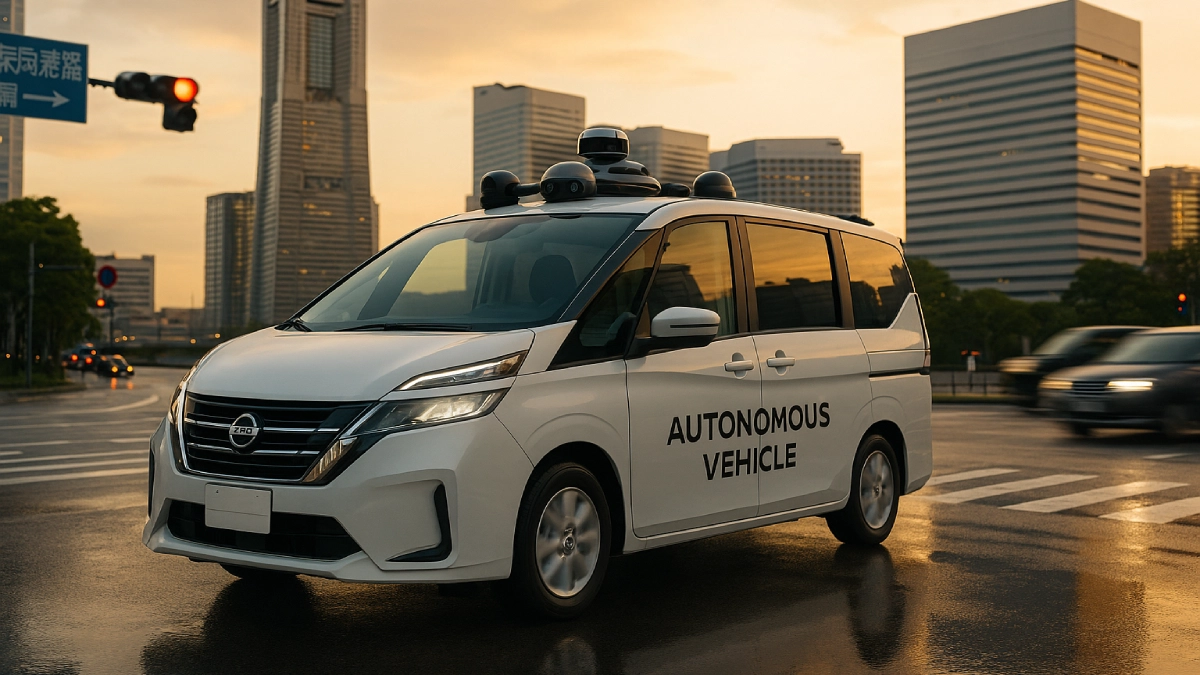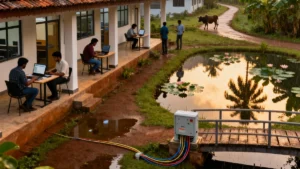Nissan’s plan to introduce urban self-driving mobility services by 2027 is not simply a new car launch; it is a coordinated build-out of sensors, AI, telecom, municipal integration, regulation, and fleet operations into one living system that functions on real city streets. The story is less about a steering wheel and more about how an entire service will be licensed, supervised, maintained, dispatched, and trusted in dense, unpredictable urban spaces.
Why 2027 matters
Nissan has set fiscal year 2027 as the commercialization window for autonomous mobility services in Japan, with trials ramping beforehand and service operations designed in lockstep with local authorities. The date is anchored to a technology bridge: next-generation driver assistance and urban autonomy capabilities maturing together, so that city-scale services are not a moonshot, but a culmination of staged testing and policy alignment.
The vehicle stack
Nissan’s latest prototypes are purpose-built for urban perception, combining multi-lidar arrays, high-count camera and radar suites, and roofline sensor placement to pierce occlusions around vans, cyclists, and urban clutter. The hardware is matched by AI that handles recognition, behavior prediction, and motion planning in intersections and mixed-traffic zones where rules are clear but reality is messy.
The software brain
The software roadmap pairs “ground truth” perception with embodied AI decision-making to learn from diverse real-world data and generalize across urban and highway contexts. The aim is point-to-point reliability, not just within geofenced comfort zones, and faster adaptation to new scenarios and platforms as the service scales beyond initial pilots.
City partnerships and policy
Urban autonomy only works when cities are co-authors. Nissan’s plan is built with municipalities, transport operators, and national ministries to align on safety cases, remote monitoring standards, and service design. The target is to begin limited services in multiple municipalities, using progressive autonomy in trials to build public confidence and regulatory readiness.
Operations: from demo to dependable
Driverless is the headline, but dependable is the business. That requires robust workflows for dispatch, cleaning, charging, maintenance, tele-assist, incident response, and customer support. Nissan’s ramp includes multi-vehicle demonstrations, remote supervision frameworks, and standardized operating procedures that can withstand daily service variability, not just media demos.
Market context and positioning
Japan’s aging demographics and driver shortages create immediate use cases for Level 4 services in both dense cores and mobility-poor areas. Nissan’s home-market advantage is a municipality-first approach and a tightly integrated tech stack, positioned not as a novelty but as an infrastructure layer for reliable, on-demand mobility.
Next-gen ProPILOT as bridge tech
A key strategic lever is a next-generation ProPILOT rolling out to production vehicles in the same timeframe, bringing lidar and advanced AI to consumer cars. This dual-track approach—fleet services plus retail driver assist—builds data, familiarity, and regulatory comfort in parallel, smoothing adoption while iterating the autonomy stack in the wild.
What could derail the plan
- Safety incidents or rare edge cases in complex intersections could slow driverless approvals without robust remote oversight and incident playbooks.
- Municipal readiness and integration timelines may vary, affecting the multi-city 2027 goal.
- Competitive moves from other global and domestic players could reshape regulatory expectations and service economics.
Why this ecosystem view wins
Treating urban autonomy as a system-of-systems improves odds of durable success: sensors and AI are necessary but insufficient without city partnerships, operations, and policy. Nissan’s staged demonstrations, regulatory alignment, and fleet-first mindset are the pragmatic ingredients for moving from pilot to public utility.
What to watch next
- Expansion of Yokohama trials into multi-vehicle, customer-facing pilots with increasing autonomy.
- Formal safety assurance and remote monitoring frameworks published ahead of driverless approvals.
- Announcements of first service municipalities and service types, such as fixed-route shuttles or zoned robotaxis.
Last Updated on October 18, 2025 by Lucy




